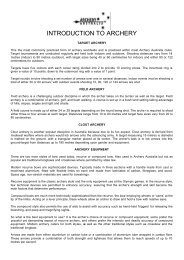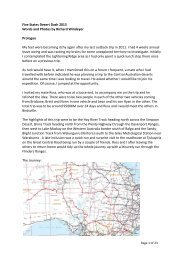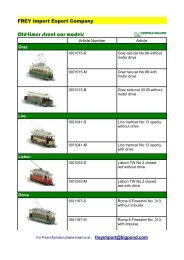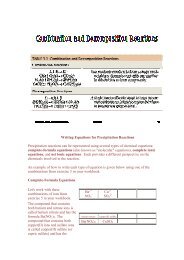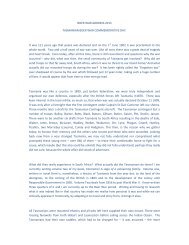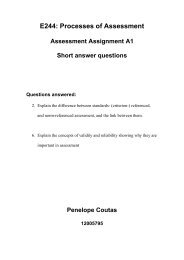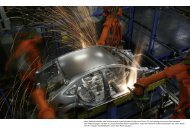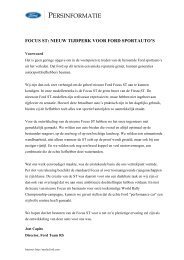TREATING ACIDITY IN COAL PIT LAKES USING SEWAGE AND ...
TREATING ACIDITY IN COAL PIT LAKES USING SEWAGE AND ...
TREATING ACIDITY IN COAL PIT LAKES USING SEWAGE AND ...
Create successful ePaper yourself
Turn your PDF publications into a flip-book with our unique Google optimized e-Paper software.
7 Perth microcosms – Experiment 2<br />
7.1 Background<br />
37<br />
McCullough, Lund and May (2008)<br />
Open-cut mining can create pits that are below the natural watertable. Once dewatering<br />
operations stop, these pits will form pit lakes as surface and groundwaters equilibrate (Castro<br />
& Moore, 1997). Mining can lead to the exposure of rock strata to weathering which can<br />
result in acidification and metal contamination of contacting waters as in Acid Mine Drainage<br />
(AMD) (Banks et al., 1997). Receiving environments for AMD typically have reduced<br />
environmental and social values, and the resultant water is less valuable as a resource to the<br />
mining company (McCullough & Lund, 2006). Acid Mine Drainage is arguably the greatest<br />
environmental problem facing water management in the international mining industry today<br />
(Gray, 1997; Harries, 1998a). The large quantities of water in pit lakes potentially represents<br />
a potentially valuable resource to mining companies, the environment and community; if<br />
appropriate water quality can be achieved (Doupé & Lymbery, 2005; McCullough & Lund,<br />
2006).<br />
Sulfate reducing bacteria (SRB) can reverse the acidification process by converting sulfates<br />
to sulfides in low redox environments when supplied with labile carbon sources (see King et<br />
al, 1974). Dissolved metals can bind with sulfides or ultimately carbonates to form insoluble<br />
precipitates increasing pH.(Dillon et al., 1997; Hard et al., 1999; Küsel & Dorsch, 2000;<br />
Benner et al., 2002; Praharaj & Fortin, 2004). Tuttle et al. (1969) first suggested the use of<br />
SRB in the treatment of AMD. However, most large scale applications of the approach have<br />
focused on ex-situ treatment in bioreactors or interceptions of contaminated flows such as<br />
anoxic limestone drains and successive alkalinity producing systems. King et al. (1974)<br />
describes the recovery of acid strip mine lakes through the natural accumulation of organic<br />
matter. On this basis they advocated the acceleration of the natural process through additions<br />
of bulk organic matter such as sawdust, wheat straw, newspaper, manure, and wastewater<br />
sludge. In-lake neutralization via sulfate reduction is expected to play a key-role in the<br />
remediation of acidic mining pit lakes (Kleeberg, 1998).



